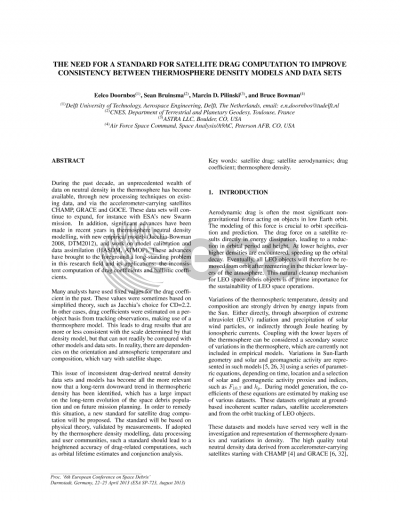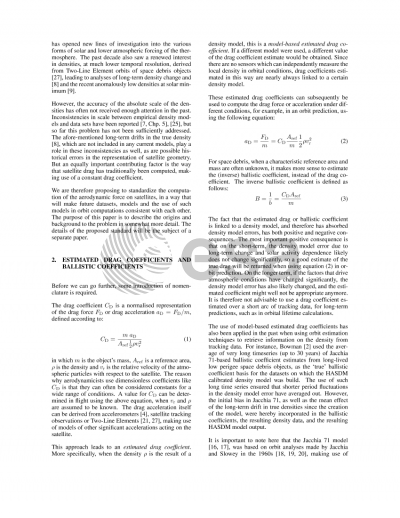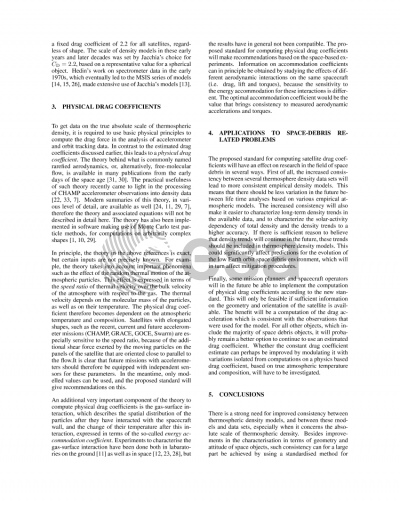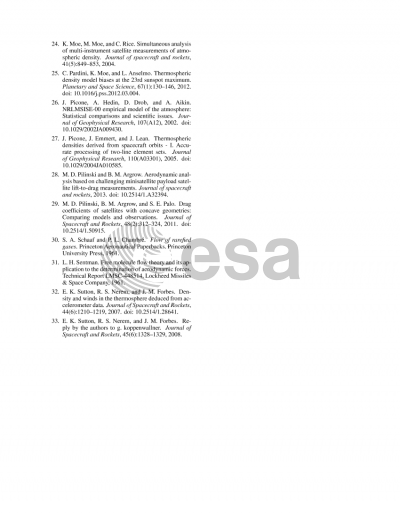Document details

Abstract
During the past decade, an unprecedented wealth of data on neutral density in the thermosphere has become available, through new processing techniques on existing data, and via the accelerometer-carrying satellites CHAMP, GRACE and GOCE. These data sets will continue to expand, for instance with ESA's new Swarm mission. In addition, significant advances have been made in recent years in thermosphere neutral density modelling, with new empirical models (Jacchia-Bowman 2008, DTM2012), and work on model calibration and data assimilation (HASDM, ATMOP). These advances have brought to the foreground a long-standing problem in this research field and its applications: the inconsistent computation of drag coefficients and ballistic coefficients. Many analysts have used fixed values for the drag coefficient in the past. These values were sometimes based on simplified theory, such as Jacchia's choice for CD=2.2. In other cases, drag coefficients were estimated on a per-object basis from tracking observations, making use of a thermosphere model. This leads to drag results that are more or less consistent with the scale determined by that density model, but that can not readily be compared with other models and data sets. In reality, there are dependencies on the orientation and atmospheric temperature and composition, which vary with satellite shape. This issue of inconsistent drag-derived neutral density data sets and models has become all the more relevant now that a long-term downward trend in thermospheric density has been identified, which has a large impact on the long-term evolution of the space debris population and on future mission planning. In order to remedy this situation, a new standard for satellite drag computation will be proposed. The standard will be based on physical theory, validated by measurements. If adopted by the thermosphere density modelling, data processing and user communities, such a standard should lead to a heightened accuracy of drag-related computations, such as orbital lifetime estimates and conjunction analysis.
Preview






